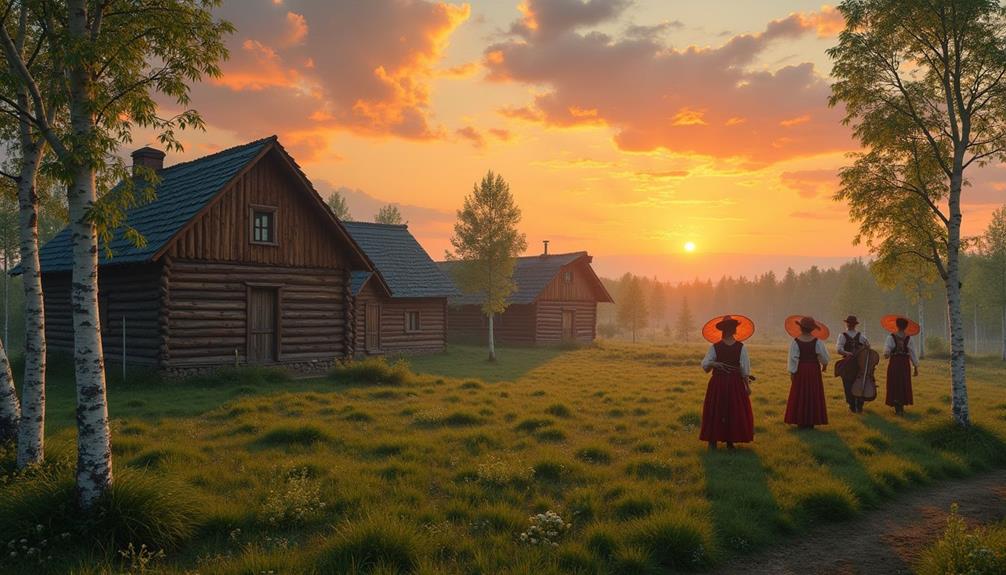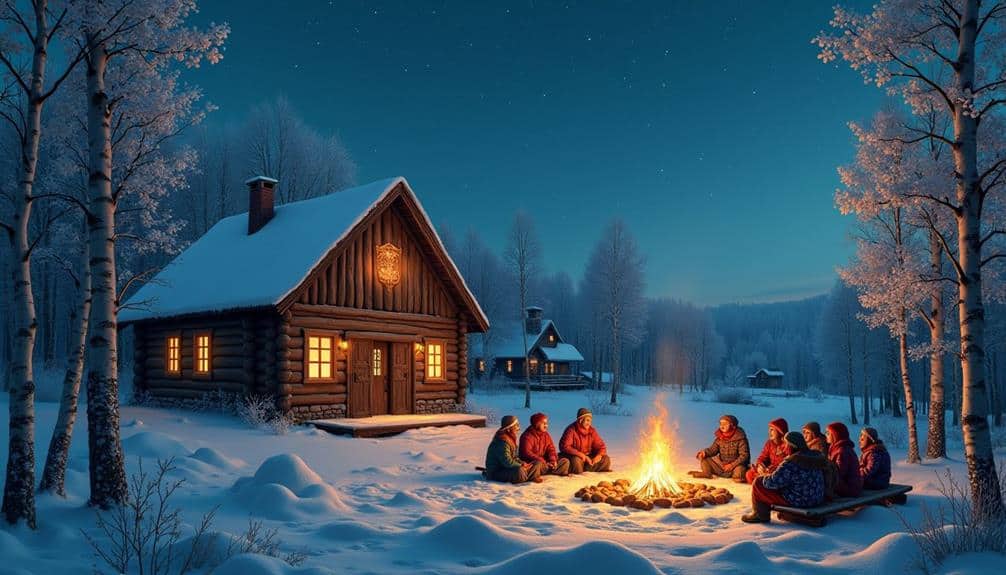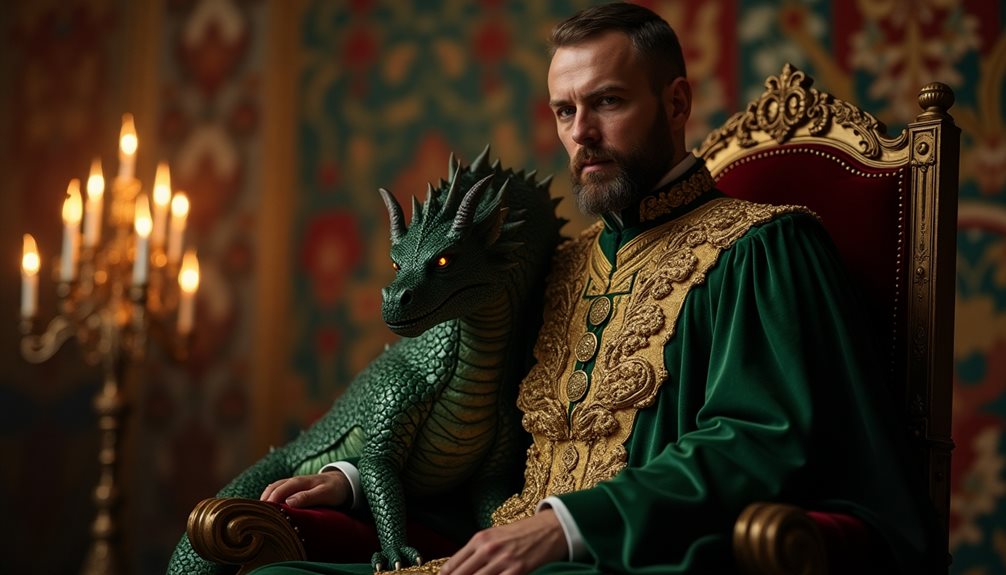Exploring the cultural roots in Russia’s rural areas reveals a rich and diverse landscape of traditions and communal practices that have endured through centuries. The vibrant rhythms of traditional folk music and the intricate choreographies of rural dance forms are not merely artistic expressions but essential components of local identity. Handicrafts, often produced with remarkable skill, tell stories of generations past, while local festivals tied to agricultural cycles strengthen community bonds. The culinary heritage, deeply connected to the land and seasons, offers more than sustenance—each dish is a narrative of historical continuity. What other hidden facets of rural life contribute to this intricate cultural mosaic?
Traditional Folk Music

Traditional folk music in Russia’s rural areas serves as a living repository of the nation’s cultural heritage. This rich melodic heritage reflects the diverse histories, customs, and daily lives of the inhabitants, offering a window into the soul of rural Russia. The music varies widely across different regions, showcasing a vast array of styles and traditions that have been passed down through generations.
Key to this musical tradition are the regional instruments, each contributing a unique sound that characterizes local folk music. The balalaika, with its triangular body and distinctive timbre, is perhaps the most iconic. Equally significant is the gusli, an ancient string instrument whose ethereal tones evoke the pastoral landscapes of the countryside.
The bayan, a type of button accordion, adds a robust, resonant quality to the music, often accompanying folk songs that narrate tales of love, hardship, and celebration. These instruments, combined with traditional vocal techniques, create a tapestry of sound that is both intricate and evocative.
Through this melodic heritage, Russia’s rural communities preserve their cultural identity, ensuring that the essence of their historical and social experiences endures for future generations.
Rural Dance Forms
The vibrant tapestry of Russia’s rural cultural heritage is not only woven through its music but also animated by its distinctive dance forms. Traditional dance in Russia’s rural areas is a vivid expression of communal life, embodying the stories, customs, and spirit of the people. These dances often reflect the agrarian rhythms and seasonal cycles that have shaped village life for centuries.
One of the most notable aspects of rural Russian dance is its regional variations. Each region boasts its unique styles and movements, shaped by local history, geography, and ethnic influences. For instance, the energetic leaps and squats of the Cossack dances from the southern steppes contrast sharply with the more restrained, flowing movements seen in the dance traditions of Northern Russia.
These traditional dances are often performed at festivals, weddings, and community gatherings, serving as a means of preserving cultural identity and fostering social cohesion. Dancers typically wear colorful, ornate costumes that highlight the regional characteristics and historical context of each dance form.
Through these lively and varied expressions, rural Russian dance forms remain an essential and dynamic component of the country’s rich cultural heritage.
Handicrafts and Artistry

Russian rural areas are renowned for their rich tradition of handicrafts and artistry, which serve as a demonstration of the creativity and resourcefulness of the local populace. These regions boast an impressive array of handmade goods, ranging from intricately woven textiles to beautifully crafted ceramics. Each item reflects a deep connection to cultural heritage and local history.
Ceramic techniques in rural Russia are particularly remarkable. Artisans employ age-old methods passed down through generations to create pottery that is not only functional but also aesthetically pleasing. The use of natural clays and organic dyes results in pieces that are uniquely tied to the land and its resources.
Traditional motifs, often inspired by nature and folklore, adorn these ceramics, adding layers of meaning and storytelling.
Equally significant are the textile patterns produced in these areas. Russian rural weavers are adept at creating elaborate designs that often incorporate symbolic elements. These patterns are not merely decorative; they carry cultural significance and are sometimes used to convey messages or tell stories.
The meticulous process of weaving, dyeing, and embroidering fabrics showcases the skill and dedication of the artisans, making each piece a work of art in its own right.
Local Festivals
Celebrations in rural Russia serve as a vibrant tapestry of the community’s cultural heritage and social life. Local festivals, deeply rooted in tradition, often revolve around harvest celebrations and seasonal rituals that mark the passage of time and the cycles of nature. These events are not merely social gatherings but are imbued with historical significance, reflecting the agricultural foundation of rural life.
One of the most significant festivals is the “Maslenitsa,” a pre-Lenten celebration marking the end of winter and the arrival of spring. This week-long event is filled with traditional activities, including the burning of effigies and the consumption of pancakes, symbolizing the sun.
Another notable festival is “Kupala Night,” celebrated during the summer solstice, where villagers engage in various rituals believed to bring good fortune, such as jumping over bonfires and searching for magical fern flowers.
Harvest celebrations, such as the “Obzhynky,” are particularly essential, as they express gratitude for a bountiful yield. These festivals feature communal feasts, songs, and dances, reinforcing social bonds and honoring the land’s abundance.
Through these local festivals, rural communities in Russia preserve their cultural identity and strengthen communal ties.
Village Cuisine

Village cuisine in rural Russia offers a tantalizing glimpse into the region’s culinary heritage, where time-honored recipes and locally sourced ingredients create a distinct gastronomic experience.
This cuisine is deeply intertwined with the seasonal cycles, reflecting the bounty of each time of year. Traditional ingredients such as buckwheat, potatoes, beets, and rye form the backbone of many dishes, while wild mushrooms, berries, and herbs add unique flavors that vary with the seasons.
Seasonal dishes in rural villages often celebrate the natural abundance available during specific times of the year. In summer, the tables are laden with fresh vegetables and fruits, while autumn brings a wealth of root vegetables and preserved foods.
Winter menus typically feature hearty stews and soups, utilizing preserved ingredients to sustain the community through the cold months. Spring, on the other hand, is marked by a revival of fresh greens and early vegetables.
Iconic dishes such as borscht, a beet-based soup, and kasha, a grain porridge, highlight the simplicity and richness of village cuisine.
These meals not only nourish the body but also carry with them the stories and traditions passed down through generations.
Agricultural Practices
Amidst the vast landscapes of rural Russia, agricultural practices form the bedrock of local life and culture. The region’s farmers have long prioritized crop rotation—a method integral to maintaining soil health and maximizing yield. By alternating crops such as grains, legumes, and root vegetables, they effectively manage soil fertility and reduce pest infestations without over-relying on chemical fertilizers and pesticides. This technique not only sustains the land but also guarantees a diverse and resilient agricultural output.
Sustainable farming in rural Russia goes beyond just crop rotation. Many farmers incorporate traditional methods that emphasize harmony with the environment. These practices include the use of organic fertilizers, such as compost and manure, and integrated pest management strategies that rely on natural predators to control harmful insects.
The commitment to sustainable farming is deeply rooted in the community’s respect for the land, which is seen as a living entity that must be nurtured and preserved for future generations. This holistic approach underscores the importance of environmental stewardship in rural Russia.
Folklore and Legends

Steeped in mystery and tradition, the folklore and legends of rural Russia offer a window into the soul of its communities. These narratives, passed down through generations, are a crucial part of the oral traditions that shape collective memory and cultural identity.
Russian folklore is rich with mythical creatures like the Baba Yaga, a fearsome witch who dwells in a hut that stands on chicken legs, and the Domovoi, a household spirit believed to protect the home and its inhabitants.
These stories often serve as moral lessons, cautionary tales, or explanations for natural phenomena, embodying the values and beliefs of rural life. The act of storytelling itself is a communal event, bringing people together to share in the wisdom and entertainment of these ancient tales.
The oral traditions guarantee that the folklore remains dynamic, adapting to the changing times while preserving its core essence.
Moreover, these legends are more than mere stories; they are a reflection of the rural Russian worldview, where the line between the natural and supernatural is often blurred.
Community Life
In the heart of Russia’s rural areas, community life forms the bedrock of social structure and daily existence. These small villages are characterized by close-knit relationships where residents rely on one another for support and companionship.
Community gatherings are central to rural life, serving as essential opportunities for social interaction and mutual aid. Whether celebrating religious holidays, seasonal festivals, or local milestones, these events foster a sense of belonging and collective identity.
Social traditions play a significant role in maintaining the cohesiveness of rural communities. Practices such as communal farming, where neighbors collectively work on each other’s land, and traditional craft fairs, where local artisans display and sell their wares, reinforce bonds among residents.
In addition, weekly markets become venues not just for commerce, but for exchanging news, sharing stories, and reinforcing social ties.
These communal activities are not merely remnants of the past but continue to adapt, ensuring their relevance in contemporary rural life. They provide a robust social framework that helps individuals navigate the challenges of rural existence while preserving the cultural heritage that defines Russia’s countryside.
This intricate web of community life underscores the enduring strength and resilience of rural Russian society.




